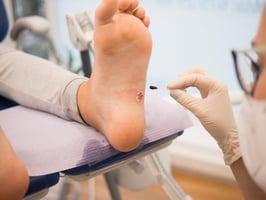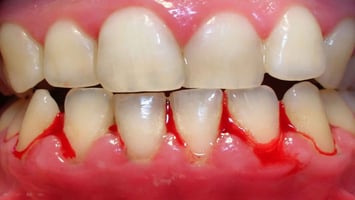Dubai, known for its extravagant experiences, offers a unique blend of relaxation and exhilaration...
Promising New Treatments for Actinic Keratosis in Dubai

Actinic keratosis, often referred to as AK, is a common skin condition caused by prolonged exposure to the sun's harmful ultraviolet (UV) rays. It manifests as rough, scaly patches on the skin, typically found on areas frequently exposed to the sun, such as the face, ears, scalp, arms, and hands. While actinic keratosis is considered precancerous, it can progress to squamous cell carcinoma if left untreated. Therefore, early detection and appropriate Actinic Keratosis Treatment in Dubai are crucial in managing this condition effectively.
Understanding Actinic Keratosis
Before delving into the promising new Actinic Keratosis Treatment in Dubai available for actinic keratosis in Dubai, let's first understand the condition itself. Actinic keratosis is characterized by the presence of small, rough, sandpaper-like patches on the skin. These patches may be flesh-colored, pink, red, or brown, and they often feel rough to the touch. Individuals with fair skin, light eyes, and a history of frequent sun exposure are at a higher risk of developing actinic keratosis.
.jpg?width=800&height=600&name=Actinic-Keratosis%20(2).jpg)
Risk Factors for Actinic Keratosis
Several factors increase the likelihood of developing actinic keratosis:
- Sun Exposure: Prolonged exposure to UV radiation from the sun or tanning beds is the primary cause of actinic keratosis.
- Fair Skin: People with fair skin have less melanin, making them more susceptible to sun damage.
- Age: Actinic keratosis is more common in older adults, as cumulative sun exposure increases over time.
- Immunosuppression: Individuals with weakened immune systems, such as organ transplant recipients or those with HIV/AIDS, are at higher risk.
- Geographic Location: Living in regions with intense sunlight, such as Dubai, can increase the risk of developing actinic keratosis.
Traditional Treatments for Actinic Keratosis
Historically, treatments for actinic keratosis have included topical medications, cryotherapy (freezing), curettage (scraping), and photodynamic therapy. While these methods have been effective to some extent, they often require multiple sessions and may cause discomfort or skin irritation.
Topical Medications
- 5-Fluorouracil (5-FU): This topical chemotherapy agent is applied directly to the affected skin, where it works to destroy abnormal cells over several weeks.
- Imiquimod: This immune response modifier stimulates the body's immune system to target and eliminate precancerous cells.
- Diclofenac: Often combined with hyaluronic acid, diclofenac is a nonsteroidal anti-inflammatory drug (NSAID) that can reduce inflammation and promote cell turnover.
Procedures
- Cryotherapy: Liquid nitrogen is used to freeze and destroy abnormal cells on the skin's surface.
- Curettage and Electrodessication: The affected area is scraped off using a curette, followed by electrodessication to destroy any remaining abnormal cells.
- Photodynamic Therapy (PDT): A photosensitizing agent is applied to the skin, followed by exposure to a specific wavelength of light, which activates the medication to destroy abnormal cells.
Promising New Treatments in Dubai
Dubai, known for its advanced medical facilities and innovative treatments, offers several promising options for managing actinic keratosis:
Laser Therapy
Laser therapy has emerged as a popular treatment option for actinic keratosis in Dubai. It involves using concentrated beams of light to target and destroy precancerous cells while minimizing damage to surrounding healthy tissue. laser for actinic keratosis offers precise control and can be tailored to the individual's specific skin type and condition.
Chemical Peels
Chemical peels involve applying a solution to the skin, which causes the outer layers to peel away, revealing smoother, healthier skin underneath. In the context of actinic keratosis, chemical peels can help remove precancerous lesions and promote skin renewal. Dubai-based clinics offer various types of chemical peels, ranging from superficial to deep, depending on the severity of the condition.
Photodynamic Therapy (PDT) Advancements
While photodynamic therapy has been in use for treating actinic keratosis for some time, ongoing research and technological advancements have led to improved outcomes and reduced side effects. Dubai-based dermatologists are at the forefront of utilizing the latest PDT techniques, such as fractionated PDT and daylight PDT, to effectively target and eliminate precancerous cells.
Conclusion
Actinic keratosis is a common skin condition that requires timely intervention to prevent progression to skin cancer. While traditional treatments have been effective, recent advancements in dermatological therapies offer new hope for individuals seeking treatment in Dubai. From laser therapy to chemical peels and advanced photodynamic therapy techniques, patients have access to a range of innovative options tailored to their unique needs. By staying informed about these promising treatments, individuals can take proactive steps to protect their skin health and overall well-being.
Read More About:


